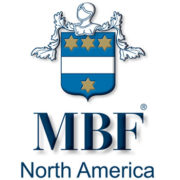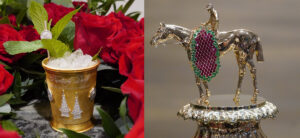
Before the first ice making machine was revealed to the American public by Florida physician John Gorrie in 1850, ice was largely harvested from the winter lakes, rivers and ponds of the Northern United States. Ice was however, not initially traded for the primary use of chilling drinks or preserving foods (early refrigerators), but rather to supply that early Victorian indulgence – ice cream.
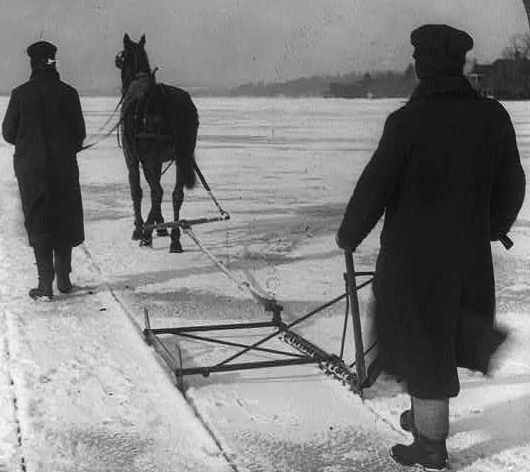
Marking ice cakes for cutting. Courtesy of Library of Congress Archives.
Despite huge amounts of ice and snow having been shipped from mountain to lowland for centuries prior throughout ancient China and Persia, the commercial trade in ice didn’t begin on any substantial scale until a driven young Bostonian named Frederic Tudor harvested his first shipload, in 1806. Sourcing stock from frozen ponds around Boston Massachusetts, Frederic’s shipment aboard the brig named Favorite consisted of around 180 tons of ice blocks bound for the French island of Martinique. How much ice survived the initial two-week voyage is not recorded but the events that followed established an industry and enlightened a new breed of consumer which would ultimately influence the habits of the social classes of the time and help evolve the mixed drinks and cocktails we still imbibe today.
Part 1: Ice Harvesting: Ice Wasn’t Always Cool (Neat drinkers can ignore this.)
Part 2: Ice Harvesting: Storage, techniques and tools
Initial demand for ice was predictably slow to catch on as the greatest difficulty facing early trade was not that of market demand but rather the understanding of the uses of ice and importantly its correct storage. Early refrigeration ice boxes and cutting tools were not yet common household items while on the flip side, the first harvesters too needed to master the melt if they were ever to succeed. Unfortunately for the harvesters, the understanding of thermal dynamics could only be obtained through an age old trial and error process. Once ice was cut from the surrounding lakes, rivers and ponds, it required correct storage if it were to survive the summer months before being shipped or carted off to its local market to hopefully be sold for a profit. Once established however, demand for ice would sky rocket into one of Americas biggest export industries reaching as far afield as India. Out of this demand an initially unforeseen use for ice would also emerge – as stated by Frederic in his diary in 1807;
“A man who had drank [sic] his drinks cold… can never be presented with them warm again”
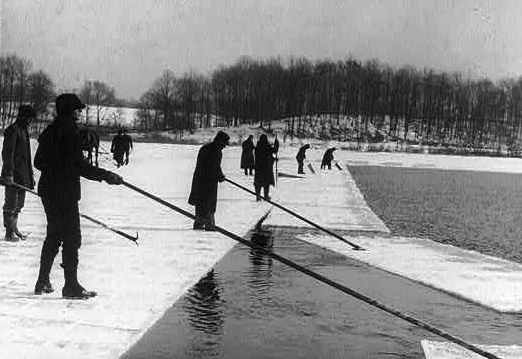
Separating ice sections. Courtesy of Library of Congress Archives.
The iced drink was born and with it the popularity of one of Americas earliest recorded cocktails, the popular southern Mint Julep, a drink which without a supply of shaved ice from the lakes of Boston, might never have been discovered.
Despite the greatest demand for ice lying in the warmer climate of the southern states of America and parts of the West Indies, England (with her love of luxury trends) would not be left behind with Queen Victoria herself recorded as enjoying a constant supply of ice from Massachusetts as delivered by the Wenham Lake Company. A shop window on The Strand in central London, was recorded in 1840 as displaying a two foot square block of Boston ice with a New England Pickerel fish frozen inside. The demand for ice would even stretch its cool fingers 16’000 miles to Calcutta, India where wealthy British subjects could purchase American ice to chill their larders and punches alike. This unique but lucrative trade with India would continue for nearly 50 years stopping only with the building of the first artificial ice plant in 1880.
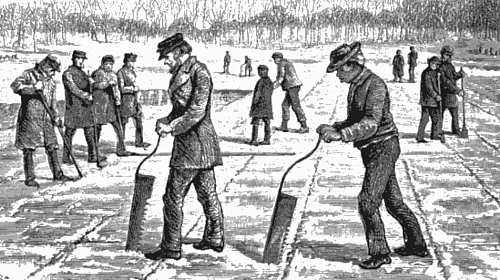
Sawing cakes by hand. Courtesy of Library of Congress.
At its peak, the American ice industry would be recorded harvesting around 8 million tons of frozen water annually, of which around 3 million tons alone would account for melt loss while awaiting sale. Harvesting at this time took place primarily along the banks of the Hudson river (near New York) where over a 150 mile stretch, 135 ice houses could be found (an average of one every 1.1 miles of coast). The industries first major supply crisis arrived not due to warm winters or from the invention of commercial ice machines but rather pollution from one of the world’s fastest developing cities – New York. Regardless, ice harvesting would last as late as the 1950s and establish a global revolution for the chilled drink.
Stay Informed: Sign up here for our Distillery Trail free email newsletter and be the first to get all the latest news, trends, job listings and events in your inbox.
The Tradition Carries on to this Day
Ok, if you have kids, you own Disney’s movie Frozen. Good luck getting that music out of your head today. You’re welcome!







